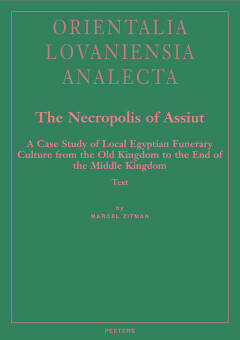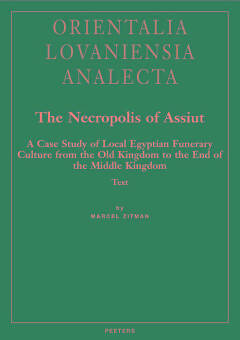
- Retrait gratuit dans votre magasin Club
- 7.000.000 titres dans notre catalogue
- Payer en toute sécurité
- Toujours un magasin près de chez vous
- Retrait gratuit dans votre magasin Club
- 7.000.000 titres dans notre catalogue
- Payer en toute sécurité
- Toujours un magasin près de chez vous
The Necropolis of Assiut, 2-Volume Set
A Case Study of Local Egyptian Funerary Culture from the Old Kingdom to the End of the Middle Kingdom
M Zitman
387,45 €
+ 774 points
Description
The history of Assiut in the First Intermediate Period and Middle Kingdom has mainly been written on the basis of its famous nomarchal tombs. This study takes a different approach by focusing on the other funerary remains from Assiut. It is based on a comprehensive collection of the finds from excavations conducted during the first half of the 20th century, including the unpublished work by D.G. Hogarth and E. Schiaparelli. The study presents a survey of the fieldwork conducted, a spatial analysis of the Siutian necropolis, 'new' candidates for hitherto unidentified nomarchal tombs, and a thorough analysis of the available funerary finds, many of which are unpublished. The author identifies and describes four distinct phases of local funerary culture at Assiut, spanning the late Old Kingdom, First Intermediate Period and the early Middle Kingdom. Based on archaeological dating, this study points out burials of local officials of the late Old Kingdom and First Intermediate Period, some of them found intact. The study also traces the development of the Siutian style of coffin decoration, from the late 6th dynasty to the end of the 12th. In accordance with the view of Gunther Lapp, it is shown that at Assiut certain types of coffin decoration with text columns on the exterior were introduced in the late 11th dynasty, thus placing the Siutian style of coffin decoration about 100 years ahaed of developments elsewhere in Egypt. It is hoped that this book will contribute to the ongoing research of this fascinating site.
Spécifications
Parties prenantes
- Auteur(s) :
- Editeur:
Contenu
- Nombre de pages :
- 751
- Langue:
- Anglais
- Collection :
- Tome:
- n° 180
Caractéristiques
- EAN:
- 9789042921061
- Date de parution :
- 13-07-10
- Format:
- Coffret
- Format numérique:
- Papier over dekens
- Dimensions :
- 218 mm x 305 mm
- Poids :
- 2775 g







